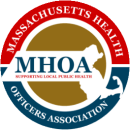
ES 3. Communicate effectively to inform and educate
Core Function: Policy Development
Why This Is Important
Local, statewide, and national health education and health promotion activities have demonstrated success in building people’s knowledge, shaping their attitudes, and informing their decision-making choices. They can communicate information about personal risk factors, and publicize laws and programs that promote safe, healthy behaviors that protect people from these risks. They can also shape the public narrative about opioid misuse and people with OUD, including helping to reduce the stigma of substance misuse.
What’s Involved
- Develop and disseminate health education and promotion activities that reflect the culture, preferred language, and background of the populations they are meant to serve.
- Develop and disseminate health education and promotion activities that seek to reduce stigma associated with opioid disorder and mental health.
- Collaborate with other schools, community-based organizations, faith-based communities, and work sites to implement and reinforce programs and messages.
Key Considerations
- Communication strategies should be part of a comprehensive approach. The key to effective opioid prevention is to use multiple strategies, in multiple settings, toward one common goal. Communications campaigns should align with and reinforce other health promotion and prevention efforts.
- Effective communication campaigns don’t need to be broad. Some of the most effective campaigns are those directed toward specific groups or sub-populations because they can speak directly to their needs, norms, and cultures.
- Communication campaigns and materials should reflect the culture, preferred language, and background of the populations they are meant to serve. For example, understanding and using the most appropriate terms and phrases for your intended audience helps to ensure that materials are welcomed and not deemed offensive.
- Community input is essential. Be deliberate about involving community members and partners in meaningful ways as you design and develop communication materials and messaging. Reach out to culturally relevant organizations to build connections: these partners can help you identify informal leaders who can in turn help you network with others. They can also help you identify communication channels that are most likely to reach your intended audience.
- Creating culturally appropriate communication materials requires more than mere translation. To be effective, materials and messaging must reflect the values norms, and beliefs of the populations for which they’re intended.
Get Started!
- Determine which factors you want your communications campaign to address. What are your goals? Do you want to change behavior(s)? Raise awareness? Reduce stigma?
- Define your audience. Be as specific as possible.
- Learn about the kinds of prevention programs that your state, community, and schools are already implementing (e.g., MDPH’s Journey Recovery Project for pregnant and parenting women with substance use disorders). This will help to ensure that any new campaign reinforces existing messages.
- Convene focus groups with community members, including representatives from those identified sub-populations that are at increased risk of opioid misuse, to collect input on all aspects of campaign design, messaging, and delivery.
- Cultivate relationships with local journalists. Media outlets can be important partners in your prevention efforts, so you will want to nurture these relationships at every opportunity. Good media engagement helps to ensure that messaging is
represented accurately and communicated broadly. Media scans can also be a good way to assess local readiness to tackle opioid-related problems. - Select your communications delivery channels, including social media platforms. Think carefully about which channel will help you best reach your audience.
Communications in Action: Boston’s CopeCode Club
In April, 2020, the Mayor’s Office of Recovery Services, in partnership with the Massachusetts General Hospital, Boston Public Health Commission, and DPH, launched the CopeCode Challenge. The campaign supports Boston youth in identifying healthy ways to cope with feelings that stressful situations like the COVID-19 response produce. Campaign objectives include:
- Encouraging youth to think about healthful ways to manage difficult feelings
- Normalizing the challenges that youth in Boston experience
- Increasing youth providers’ capacity to engage youth in conversations around positive coping skills.
The campaign promotes nine primary methods for managing stress through youth stories: Move, Create, Sing, Think, Share, Rest, Breathe, Write, and Bond. Key components include:
- Digital Ecosystem (copecode.com)
- Posters
- Activity Kit
- Experiential Activities
Participating youth are invited to join others across the city in practicing positive coping skills from the comfort of their own homes, and to incorporate a series of Stress Science Tips into their routines. The site also provides support resources.
